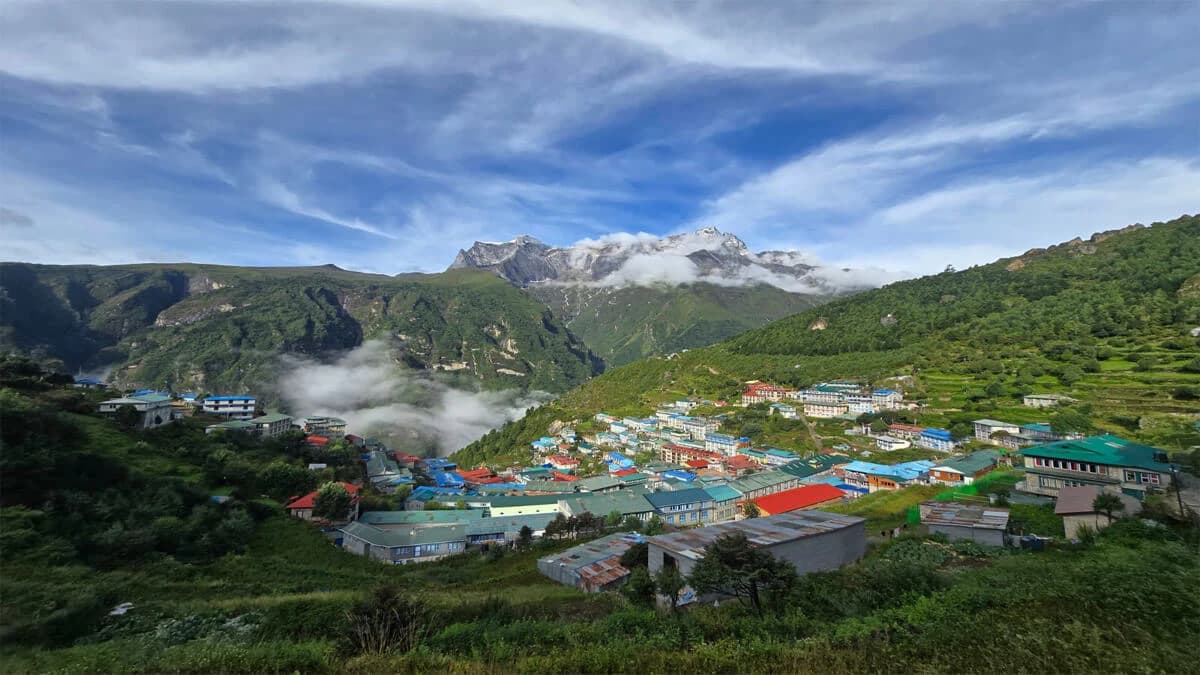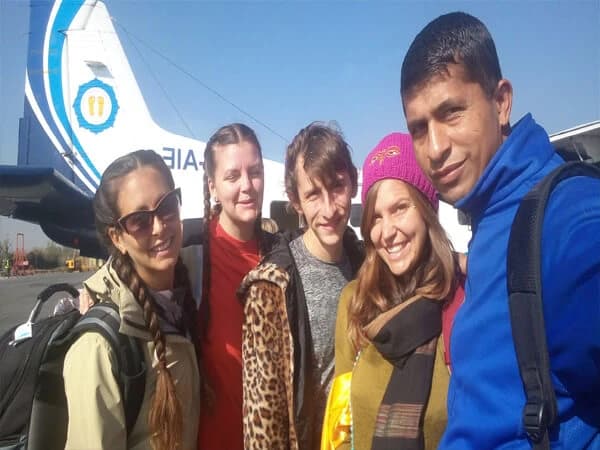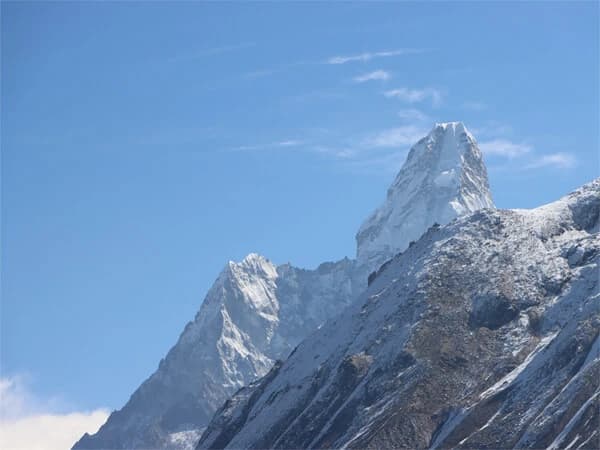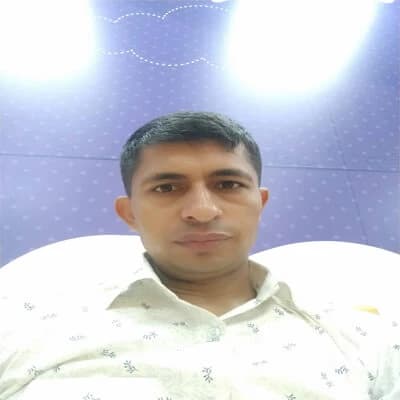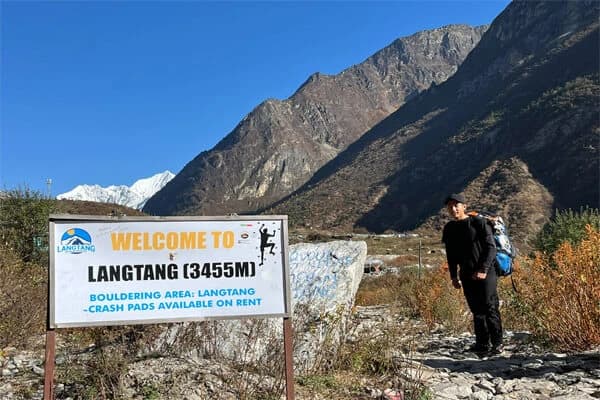What makes trekking in the Everest region so special? The mix of the stunning Himalayan landscape, the lively Sherpa culture, and the sense of adventure that comes from following in the footsteps of renowned climbers is the answer for many tourists. From short, picturesque climbs to strenuous high-altitude excursions, the Khumbu, often known as the Everest region, is home to some of the most popular trekking routes worldwide.
Trekkers can experience the kind hospitality of Himalayan towns, see Mount Everest up close, and centuries-old monasteries here. There is something for everyone thanks to the variety of routes, whether you are an experienced trekker hoping to traverse the high mountains, a beginner looking for a quick family outing, or a photographer hoping to capture the ideal mountain sunrise.
Naturally, there are significant questions when trekking in this area: Which path ought to you to take? How challenging is it? What season is ideal? What preparations are necessary before departing?
To help you plan your trip with confidence and excitement, this blog will guide you through the top trekking routes, must-see sights, and crucial advice in the Everest region.
Popular Everest Region Trekking Routes
The Everest region is often always the first place that comes to mind when someone thinks of Nepal Himalaya trekking. Numerous well-known paths go through Sherpa villages, cross suspension bridges, and ascend to stunning vantage spots of Everest and the neighboring peaks. You can select from a variety of options based on your time constraints, level of fitness, and trekking objectives. Here are a few of the most well-liked treks, each with its own special features and distinct character.
Everest Base Camp Trek (Classic Route)
The Classic Everest Base Camp Trekis the highlight of all experiences in the Nepal Himalaya trekking. Beginning with the well-known flight to Lukla, this traditional Khumbu trek itinerary typically lasts 12 to 14 days. The route then passes via Phakding, Namche Bazaar, Tengboche, Dingboche, Lobuche, and, at 5,364 meters, Everest Base Camp.
There is more to the trek than the excitement of arriving at base camp. Trekkers encounter Buddhist temples, Sherpa friendliness, and breathtaking vistas of Ama Dablam, Lhotse, and Everest itself when traveling via these locations. In addition to providing much-needed rest, acclimatization days in Namche Bazaar and Dingboche offer cultural experience.
The altitude, not the terrain, is the main factor making the trek relatively difficult. Even so, it continues to be the most recognizable option for those hoping to follow in the mountaineers' footsteps as they ascend the highest peak in the world.
Everest Base Camp Trek with Helicopter Return
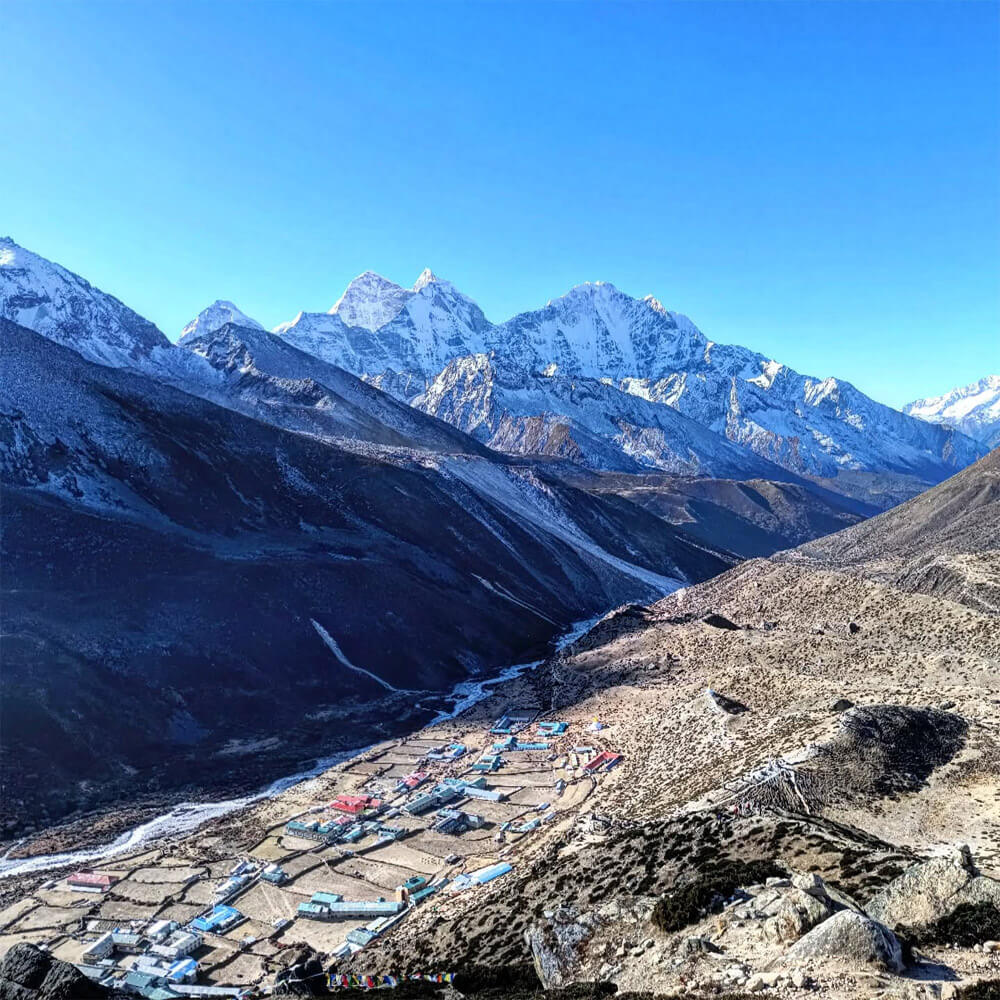
TheEBC Trek with Helicopter Return is a great choice for people who desire the Everest Base Camp experience but have a more convenient schedule or want more comfort. You can take a picturesque helicopter trip from Gorakshep or Pheriche straight to Kathmandu or Lukla rather than trekking all the way back.
This version eliminates many days of trekking downhill and shortens the travel to roughly nine or ten days. Although it costs a little more than the typical route, many people think the convenience and stunning Himalayan aerial views make the difference. This is one of the greatest methods to combine an exhilarating helicopter tour with trekking for affluent or time-constrained people.
Everest Gokyo Lakes Trek
Another must-see in the Khumbu region is the Gokyo Lakes Trek. From Namche Bazaar, this journey takes a separate route that leads to the blue Gokyo Lakes, which are revered by both Hindus and Buddhists.
Climbing Gokyo Ri (5,357 meters), which provides one of the best panoramic views of Everest, Cho Oyu, Makalu, and Lhotse, is the route's highlight. Gokyo Ri offers an even more breathtaking view than Kala Patthar, according to many trekkers.
This trip, which typically lasts 12 to 14 days, is a fantastic substitute for the more crowded main EBC trail for those who still want to enjoy the breathtaking surroundings. Trekkers can enjoy more peace and quiet along the way because the terrain is less populated and contains moderate ascents.
Everest Three Passes Trek
The Everest Three Passes Trek is the best trekking challenge in the Nepal Himalaya for those seeking adventure. This path connects the EBC trail with three high mountain passes: Renjo La (5,360 m), Cho La (5,420 m), and Kongma La (5,535 m).
Although the journey is difficult and often takes 18 to 21 days, it offers a comprehensive experience of the Khumbu. You will traverse rocky mountain passes that challenge your fortitude and resolve, as well as Everest Base Camp and Gokyo Lakes.
Due to its difficulties, the Three Passes Trek is best suited for seasoned trekkers who have some high-altitude trekking experience and are in good physical condition. Although it is less crowded than the traditional EBC trek, it nonetheless offers a sense of genuine adventure and even more breathtaking scenery.
Everest Panorama Trek (Everest View Trek)
Trekking for two weeks is not something that everyone has the time or inclination to do. The Everest Panorama trek is the ideal shorter Khumbu trek itinerary for individuals who desire it. This journey typically takes five to seven days, starting in Lukla and ending in Namche Bazaar before climbing to Tengboche, which is well-known for its monastery and views of Ama Dablam and Everest.
With a maximum elevation of about 3,800 meters, it is suitable for older tourists, families, and anybody else who want to experience the Everest region without the dangers of high altitude. The highlight is going to the Everest View Hotel, where you can comfortably look at Mount Everest while sipping tea. One of the greatest ways to start trekking in the Himalayas is with this journey, which is rated as easy to moderate.
Jiri to Everest Base Camp Trek
Trekkers would trek from Jiri to Everest Base Camp, the route taken by the first Everest expeditions, prior to the widespread usage of airplanes to Lukla. The entire trip takes around three weeks when using this route, which adds roughly six to seven days to the typical timetable.
Despite being longer, this trip is worthwhile since it offers a more in-depth view at rural Nepalese life and landscapes as it passes through communities at a lower elevation. Trekkers are able to experience the physical endurance and cultural diversity of a genuine Himalayan adventure. The long trek has a unique historical attraction for those who wish to walk in the footsteps of Sir Edmund Hillary and Tenzing Norgay.
Pikey Peak Trek
One of the Everest region's best-kept secrets is the Pikey Peak Trek. This trek, which is lower in elevation than EBC or Gokyo, provides breathtaking vistas of Everest and the surrounding Himalayan range at daybreak.
It is ideal for trekkers looking for privacy because it is typically less popular and lasts 7 to 9 days. Climbing Pikey Peak (4,065 m), where, on clear days, sunrise illuminates the Himalayan chain, including Everest, Makalu, and Kanchenjunga, is the highlight. Because it blends mountain views with real Sherpa culture, monasteries, and picturesque rhododendron forests, many people rank this walk as one of the best short treks in Nepal.
Choosing the Right Route
With so many options, how do you choose the best Khumbu trek itinerary? Your time, financial situation, degree of fitness, and trekking objectives will all play a role:
- The EBC Trek is the best option for first-timers and traditional Everest trekkers.
- The EBC Trek with Helicopter Return or Panorama Trek are the finest options for those with tight schedules or those seeking luxury.
- For more picturesque paths, consider the Gokyo Lakes Trek.
- The Three Passes Trek is a great option for anyone seeking adventure and difficulty.
- For those who enjoy history, stroll to EBC from Jiri.
- The Pikey Peak Trek is the best option for those seeking privacy and a shorter trek.
Whether it is the serene spirituality of Tengboche Monastery, the awe-inspiring experience of traversing a high Himalayan pass, or the turquoise lakes of Gokyo, each of these routes offers a distinct perspective of the Everest region.
Reaching base camp is only one aspect of the Everest region; another is taking in the scenery, customs, and difficulties that make Nepal Himalaya trekking so special. Every track in the Khumbu region offers a lifetime of memories, whether you opt for a little trek like Pikey Peak or a strenuous, lengthy expedition like the Three Passes.
Families, luxury tourists, seasoned explorers, and those who are just interested in the highest peaks in the world can all find a journey that suits them in this area. By selecting the right Khumbu trek itinerary, you can ensure your adventure matches your abilities, time, and travel dreams.
Major Highlights of Everest Region Trekking
There is more to the Everest region than just towering mountains. There, adventure, culture, and environment all combine to make for a once-in-a-lifetime experience. Highlights in this Everest region travel guide include both significant cultural interactions and stunning vistas. The adventures listed below are what make trekking in Solu Khumbu a dream come true for travelers from all over the world.
Panoramic Mountain Views
One of the biggest highlights of trekking in Solu Khumbu is, without doubt, the mountain scenery. Beautiful vistas of Mount Everest, Lhotse, Makalu, Cho Oyu, and the graceful Ama Dablam await trekkers as a reward. The trail offers fresh views of snow-capped peaks and breathtaking scenery at every turn. Renjo La Pass, Gokyo Ri, and Kala Patthar are well-known vantage spots that offer some of the Himalayas' most breathtaking sunrises and sunsets. The Everest region is a must-see location just because of these sights.
Everest Region Cultural Experiences
The Sherpa people, who also reside in the Everest region, provide every journey a deeper dimension with their gracious hospitality. Sherpas are renowned for their rich cultural traditions, mountaineering prowess, and tenacity. Trekkers can observe Buddhist ceremonies, prayer chants, and vibrant festivals by visiting monasteries like as Tengboche, Pangboche, and Thame. These Everest region cultural experiences connect visitors with the spiritual heart of the Himalayas. Engaging with local families, dining on Sherpa cuisine such as Sherpa stew or thukpa, and staying in traditional teahouses offer genuine insights into their everyday life.
Sagarmatha National Park’s Biodiversity
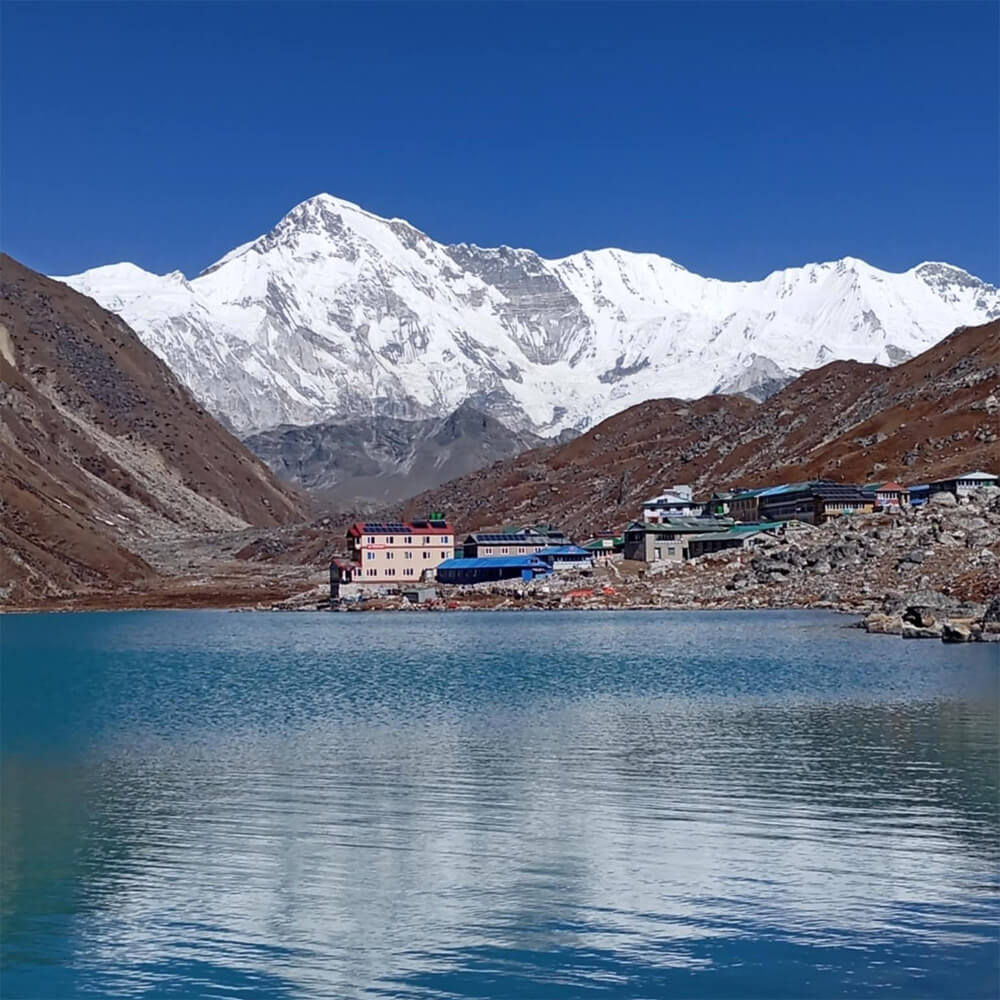
In addition to being a UNESCO World Heritage Site with abundant biodiversity, the Everest region offers more than just mountains and culture. Sagarmatha National Park is home to hundreds of bird species, Himalayan tahrs, musk deer, and red pandas. Crossing rocky high-altitude terrain is quite different from trekking through lush rhododendron and pine forests at lower levels. Every day on the route is different because of the variety of habitats.
Scenic Flights and Suspension Bridges
The trip is an adventure in and of itself. As one of the most thrilling flights in the world, the one from Kathmandu to Lukla sets the tone for the journey. You will cross prayer flag-draped suspension bridges that span thundering rivers deep below as you proceed along the trails. Despite their excitement, these crossings frequently end up becoming trekkers' favorite recollections.
Unique Trekking Experiences
Special experiences like drinking coffee at the Everest View Hotel while admiring Everest, scaling Gokyo Ri to see its mirror-like lakes, or testing your mettle on the Three High Passes path are all highlights. Every one of these encounters gives trekking in Solu Khumbu more diversity and guarantees that the journey is as full of personal growth as it is of breathtaking views.
To put it briefly, the Everest region blends exciting adventures, cultural diversity, and natural wonders. This Everest region travel guide shows that whether you come for the mountains, the people, or the unique landscapes, the highlights of trekking in Solu Khumbu will stay with you long after the trek ends.
Trekking Difficulty and Preparation
Many people dream of trekking in the Everest region, but it is crucial to be aware of the difficulties before beginning. Depending on your fitness level, altitude tolerance, and the route you take, the Everest region trek difficulty varies. To help you get ready, we have broken it down into important components below.
Everest Region Trek Difficulty
There are trails in the Everest region for trekkers of all skill levels. An example of an easy-to-moderate trek is the Everest Panorama Trek, also called the Everest View Trek. It is ideal for families or novices because it is short and does not get extremely high.
The Everest Base Camp Trek, however, is a somewhat challenging trek. Walking five to seven hours a day is required, and it often takes 12 to 14 days. The trails feature rocky roads, suspension bridges, and steep climbs and descents. Trekkers need to be well-prepared and have strong endurance, but technical climbing is not necessary.
The Everest Three Passes Trek is the most difficult in the area for anyone looking for a true challenge. It involves traversing three high mountain passes that are more than 5,000 meters high. The ideal candidates for this strenuous climb are seasoned trekkers with a high level of endurance.
Everest Region Trekking Altitude
Altitude is one of the main obstacles to trekking here. The altitude of the Everest region trekking altitude varies from approximately 5,500 meters at Kala Patthar to roughly 2,800 meters at Lukla. Oxygen levels sharply decline at these elevations, making breathing and walking more difficult. The risk of altitude sickness is real. Headaches, nausea, and lightheadedness are some of the symptoms. Trekkers should adhere to a moderate ascending plan with adequate acclimatization days in order to lower this risk. For instance, to aid with bodily adjustment, the typical Everest Base Camp schedule has rest days at Namche Bazaar (3,440 m) and Dingboche (4,410 m). Safe acclimation also requires avoiding alcohol, eating healthily, and drinking lots of water.
Everest Region Trekking Map
One of the greatest ways to get ready is to use a Everest region trekking map. Maps display potential side trips, altitude gains, and daily walking lengths. Along the trip, they also highlight monuments, teahouse stops, and communities. You can better comprehend the landscape and establish reasonable daily objectives by studying a trekking map. The map illustrates the path from Lukla to Everest Base Camp, for example, which passes via the settlements of Phakding, Namche Bazaar, Tengboche, Dingboche, and Gorakshep. The map shows alternate routes that cross Renjo La, Cho La, and Kongma La for the Three Passes Trek. This enables trekkers to plan for a more difficult trip or a direct trail to base camp.
Ultimately, the route selected, level of physical preparation, and altitude management determine the Everest region trek difficulty. Even novice trekkers can succeed with the right preparation, cautious pace, and information from a Everest region trekking map. Respecting the Everest region trekking altitude and allowing your body adequate time to acclimate are crucial. With preparation, patience, and the right mindset, the trek becomes a safe and life-changing journey.
Everest region trekking tips
Many people dream of trekking in the Everest region, but making the right preparations guarantees a fun, safe, and comfortable trip. These useful pointers can assist you in making informed plans.
Best Time to Trek in Everest region
The best time to trek in Everest region is one of the most frequently asked questions. Although there are four separate trekking seasons in the area, the ideal times to go are Spring (March to May) and Autumn (September to November). The sky are typically clear throughout these months, providing breathtaking vistas of Ama Dablam, Lhotse, and Everest. The trails are dry and sturdy, which lowers the possibility of slick conditions, and the temperatures are reasonable in comparison to the bitterly cold winter.
In addition to being less crowded, winter (December to February) can be extremely chilly, particularly at higher elevations. Although it necessitates greater preparation for cold weather, some daring trekkers relish the seclusion. While monsoon season (June to August) offers beautiful flora and quieter roads, it is less ideal because of excessive rainfall, muddy trails, and poor visibility. Your walk will be safer and more fun if you choose the appropriate season.
Everest Region Accommodation and Lodges
Typically, the Everest region accommodation and lodges are teahouses that offer simple accommodations with blankets, twin mattresses, and communal restrooms. Trekkers can discover more cozy lodges with attached bathrooms, hot showers, and even Wi-Fi in popular villages like Namche Bazaar, Lukla, and Dingboche. Because porters or yaks carry everything, facilities at higher elevations become more basic and costly. In addition to noodles, soups, and occasionally Western fare like pasta or pancakes, meals at these lodges typically consist of traditional Nepali fare like dal bhat. In some locations, there are also luxury lodges that provide great meals, comfortable lounges, and heated rooms, although these are far more expensive.
Lodges fill up quickly during busy seasons, so it is best to make reservations in advance to get the most out of your visit. It is also a good idea to bring a decent sleeping bag because blankets can not always be sufficient at higher regions.
Permits and Requirements
Each trekker must obtain two permits prior to beginning the journey: the Sagarmatha National Park Entry Permit and the Khumbu Pasang Lhamu Rural Municipality Fee. Both can be arranged in Kathmandu, Lukla, or Monjo. Keeping these permits safe is important, as checkpoints along the trail will ask to see them.
Guides, Porters, and Insurance
It is highly suggested to hire a guide and porter. Porters carry your bulky gear so you may trek more comfortably, while guides offer safety, direction, and cultural insights. Additionally, travel insurance is crucial, particularly if it includes coverage for emergency evacuation and high-altitude treks.
Everest Region Trek Cost
The route, length of time, and services you select all affect how much trekking in the Everest region costs. Trekkers typically pay between USD 900 and USD 2,500 for a 12- to 14-day Everest Base Camp trip. Longer treks like the Three Passes Trek or treks involving helicopter returns are more costly than shorter ones like the Everest Panorama Trek. Permits, flights to Lukla, lodging, meals, porter and guide services, and travel insurance are the main costs.
Everest Region Trekking Packages Cost
Budget Package (USD 900–1,200): This package, which caters to budget-conscious trekkers, often includes basic teahouse accommodations, Lukla flights, necessary permits, and standard meals. There may be porters and guides, but the lodgings are basic and have few conveniences. Out-of-pocket costs include food, Wi-Fi, and hot showers.
Mid-Range Package (USD 1,300–1,800): With better teahouse accommodations, three daily meals, a licensed guide, porter services, and airport transfers, this is the most well-liked choice. The rooms are more pleasant and the meals are more varied. It is perfect for the majority of trekkers and strikes a balance between cost and comfort.
Luxury Package (USD 2,000–2,500+): Luxury packages for comfort-seekers include accommodations at upscale lodges with gourmet meals, attached bathrooms, and heated rooms. Services frequently include highly qualified guides, private shuttles, and improved flights. Some even include a heli-return from Everest Base Camp or helicopter sightseeing.
The cost of a trek in the Everest region varies greatly depending on your level of comfort. Choosing the right package ensures you enjoy the trek within your budget while making the most of the Himalayan adventure.
Conclusion: Trekking in the Everest Region
Trekking in the Everest region is more than just a climb; it is a journey through the shadows of the tallest peaks in the world, stunning landscapes, and rich Sherpa culture. Every trek has its own benefits, whether you decide for the Classic Everest Base Camp route, the tranquil Gokyo Lakes, or the strenuous Three Passes. The trip goes more smoothly and safely if you are prepared, properly acclimated, and environmentally conscious. The region's warmth and customs, in addition to its mountains, are what make it so beautiful. When properly organized, the Everest trip has the potential to transform lives and create enduring memories.
If you want a hassle-free and well-organized adventure, book with our company, Nepal Trekking Routes. We ensure professional guidance, cultural insight, and eco-friendly practices. We allow you to fully enjoy the magic of trekking in the Everest region.
Frequently Asked Question
What are the most popular trekking routes in the Everest region?
The classic Everest Base Camp Trek is the most visited, offering close-up views of Everest and Lhotse. Other popular options include the Everest Gokyo Lakes Trek, which passes through beautiful glacial lakes, and the Three Passes Trek, a challenging route connecting Everest Base Camp, Cho La, Kongma La, and Renjo La passes. For shorter trips, the Everest Panorama or Everest View Trek provides stunning scenery without high-altitude strain.
How difficult is trekking in the Everest region?
Difficulty varies by route. Base Camp and Gokyo Lake treks are moderate but require good fitness and acclimatization. The Three Passes Trek is challenging and recommended for experienced trekkers. Shorter treks like Everest Panorama are easier and accessible to beginners.
When is the best time to trek to Everest Region?
Spring (March–May) and autumn (September–November) are best season for trekking to Everest Region, due to clear skies, moderate temperatures, and stable weather. Winter is cold, and monsoon season brings heavy rain and landslides.
What permits are required?
Trekking in the Everest region requires the Sagarmatha National Park Entry Permit and the Khumbu Pasang Lhamu Rural Municipality Fee. Guides can help arrange these.
Do I need a guide or porter?
While experienced trekkers can go independently, hiring a guide or porter improves safety, supports acclimatization, and enhances the overall experience, especially for first-time visitors.

